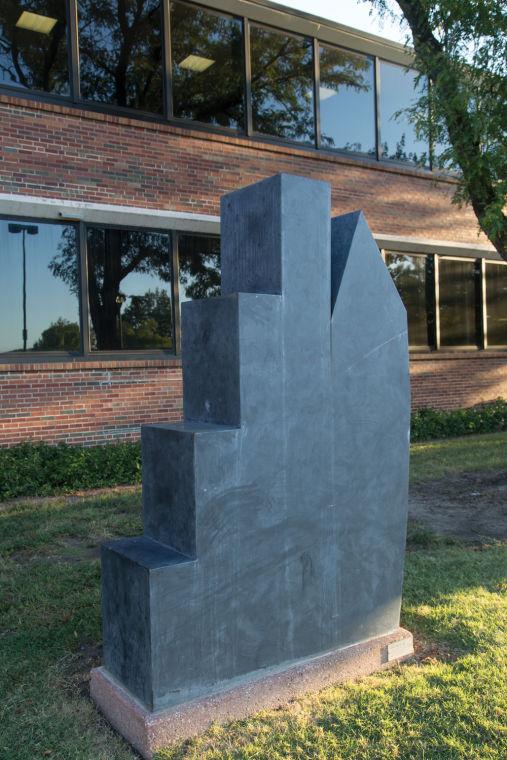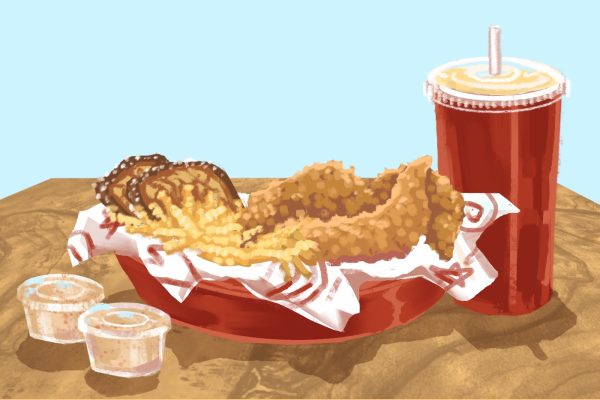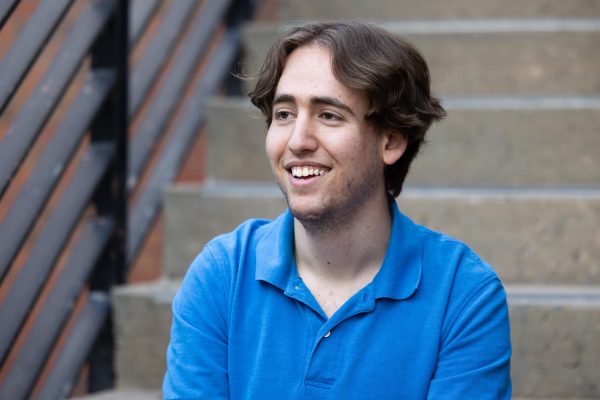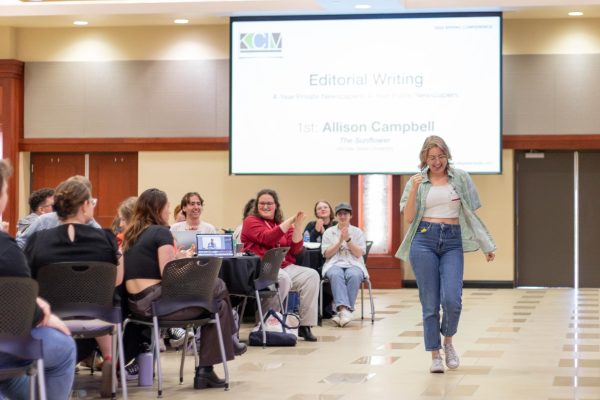Krefe-Aekyad: The story of us
The Krefe – Aekyad by Douglas Abdell that sits in front of the engineering building. The sculpture is one of many on campus.
Note: this is an interpretation.
Just south of the Engineering Building is a sculpture that can tell you more about your future, past and present than any professor, book or religion can.
Its name is Krefe-Aekayd. At first glance it faintly resembles a city skyline, or a climbing staircase that falls off after the fourth step.
If you want to go a step further, Krefe-Aekayd is a model for Western history and thought.
An explanation:
If you are alive right now, your life is built on the sacrifices and inventions of the people who have thrived and died in the past. Our lives are built on the contributions (steps) from societies that came before us.
To name a few: Agriculture from the Near East, political and writing systems from the Greeks and Romans, the Industrial revolution in Europe and technology from the 20th century.
All of these help make our lives easier and help us to enjoy our time on earth. Each technology advance puts us one step away from the confrontation of death. But the higher you climb the more fear you have of falling down.
Because the higher you fall, the harder it is to get back up.
In our culture, there is a tendency to fill our lives with tools to make our life easier. But often the technology we use makes us lose the time we were trying to save.
So how does all of this it relate to a sculpture on campus? Well, it’s a symbol that has steps that reach higher and higher into the air, eventually coming to a point where you can climb no higher.
Kind of like our present time.
When we look down, back and forward about our generation, the technology (step) that we will contribute to the next generation will be mass digital communication and our electric technology.
Smart phones, tablets, the Internet and social media have transformed our lives. They are tools we use every day.
They occupy our lives and also our time.
Realize that there is no such thing as the ‘good ole days’ before cellphones and the Internet. It was just different.
They are tools just like dynamite, the TV and the atomic bomb. They can be used for good or bad.
But all these technologies put pressure on our environments, our economies and our lives.
So with issues like global warming, overpopulation and even our own government closing down because of politics, will our technologies help us take the next step or push us over the edge?
Check out next Monday’s paper to see how the ideas from this interpretation can apply to real life.








